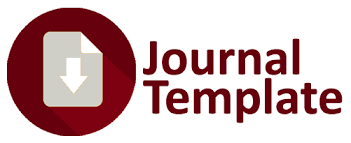AUTHOR GUIDELINES
To meet journal writing standards, submitted manuscripts shall contain; title, abstract, introduction, method, result and discussion, conclusion, and bibliography
The title should clearly describe the substance of the study with a maximum of 20 words and using the 12 sizes of Constantia Bold
The abstract is written using English and Indonesian with a 150 to 250 words for each language and 4-word maximum keywords. This section should be typed as concise as possible and composed of: problem statement, method, scientific finding results, and short conclusion. This section serves as a synopsis of your article. The abstract should only be typed in one paragraph and one-column format. Keywords must be written specifically according to the paper contents.
The script writing follows the following format:
- Manuscripts are written in Indonesian or English. The minimum number of characters allowed is 5000 words.
- Manuscripts are arranged on A4 paper layout (21.0 x 29.7 cm) in 1 column format (back and forth). Format margins 3 cm on the left and top, 2.5 cm on the right and bottom (we recommend saving as from this template)
- The font used by Constantia is 11 point with 1 spaced paragraph.
Introduction: The introduction must contain (sequentially) a general background, a state of the art as a basis for statements of scientific novelty from articles, statements of scientific novelty, and research problems or hypotheses. At the end of the introduction, the purpose of the article review must be written. In the format of scientific articles, literature review is not permitted as in the research report, but is manifested in the form of a state of the art study to show the scientific novelty of the article.
The table title is written above the table . The table is placed immediately after its reference in the text. The source of the table is written on the lower left side of the table with the title case. The number and title of the figure is written on the center under the picture. The figure source is listed directly at the end of the image title. Figure displayed in articles must be of good quality, for photos a minimum resolution of 300 dpi. Figure numbering is separate from table numbering. Each figure is given a discussion.
Conclusions: This section contains conclusions and suggestions. Conclusions describe the answers to the hypotheses and/or research objectives or findings obtained. The conclusion does not contain a repetition of the results and discussion, but rather a summary of the findings as expected in the objectives or hypotheses. Suggestions present things to be done related to further ideas from the research. Please do not use a numbering system or bullets in describing conclusions.
Reference: All references referred to in the text of the article must be listed in the Bibliography section. The bibliography must contain reference libraries originating from primary sources (scientific journals) and a minimum of 80% of the entire bibliography published in the last 5 (five) years. Bibliography of book sources published in the last 10 (ten) years. Each article contains at least 15 (fifteen) bibliography references.
Writing bibliography using Mendeley reference management application. The writing format used in Selasar is in accordance with the APA 7th Edition (American Psychological Association) format.
Journal
Hudson, J. C. (1969). A Location Theory for Rural Settlement. Annals of the Association of American Geographers, 59(2), 365–381. doi: 10.1111/j.1467-8306.1969.tb00676.x
Proceeding
Caesarina, H. M., & Aina, N. (2018). Planning and design approach in Islamic green city towards sustainable city: The case of Martapura. IOP Conference Series: Materials Science and Engineering, 403, 012001. doi: 10.1088/1757-899X/403/1/012001
Book
Mortada, H. (2003). Traditional Islamic Principles of Built Environment. New York: Routledge.
Repository
Yoelianto, B. (2005). Kajian Spasial Perkembangan Spasial Perkembangan Kota Purwodadi (Thesis, Universitas Diponegoro). Retrieved from http://eprints.undip.ac.id/15094/
Website
Aziz, A. (2011, July 16). Peranan Ulama Dalam Transformasi Sosial Budaya Menuju Masyarakat Madani. Retrieved 3 October 2018, from Grinting Community website: https://grintingcommunity.wordpress.com/2011/07/16/peranan-ulama-dalam-transformasi-sosial-budaya-menuju-masyarakat-madani/









